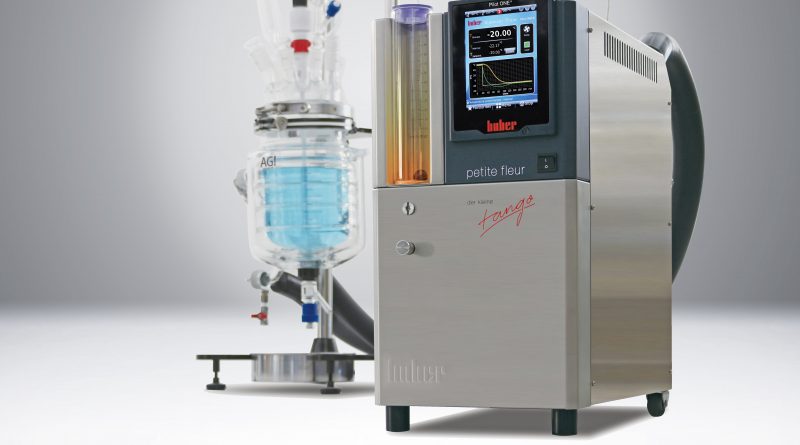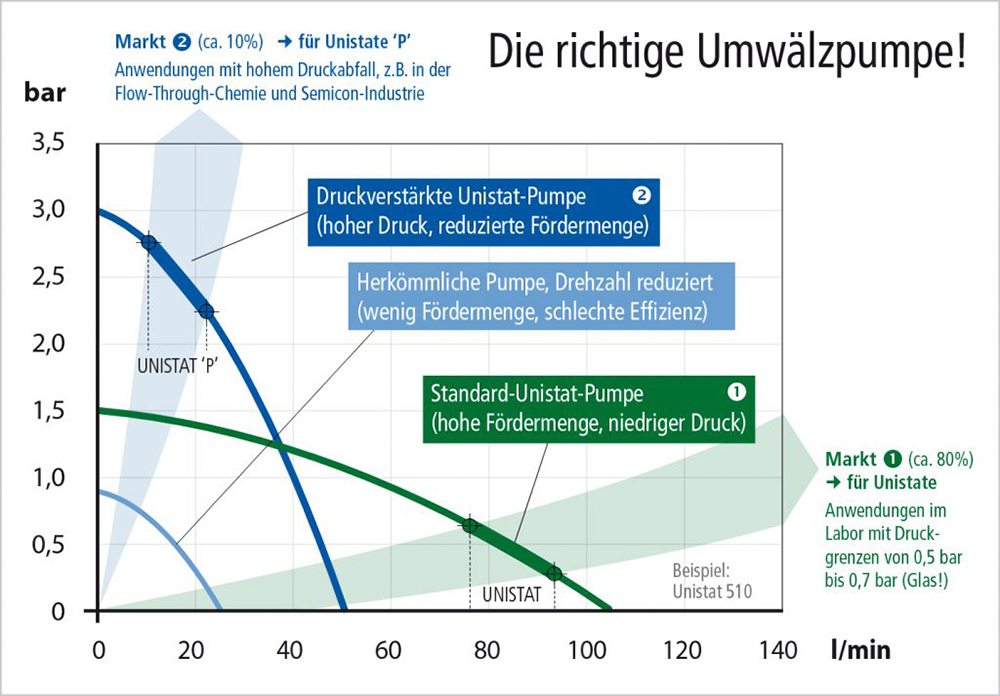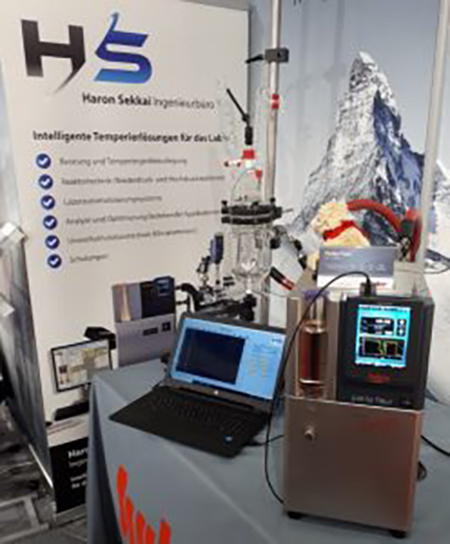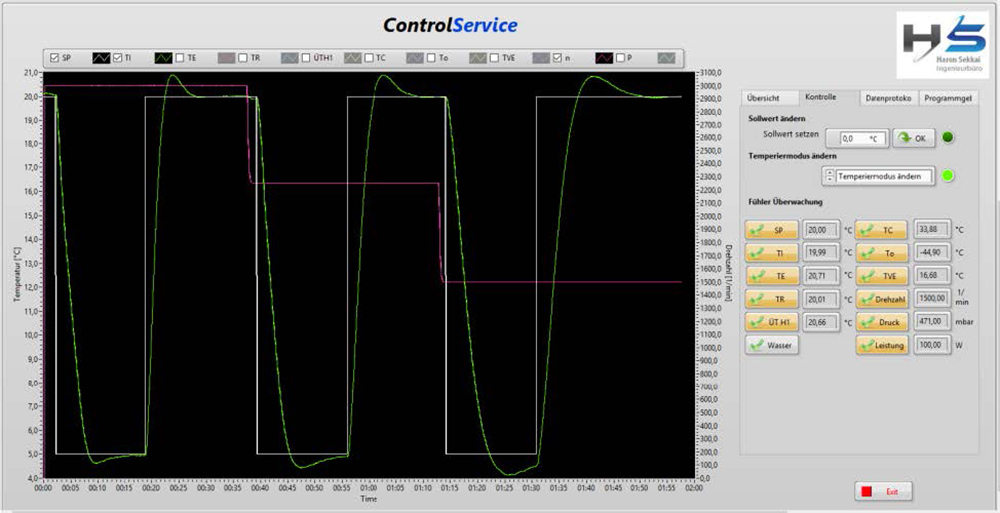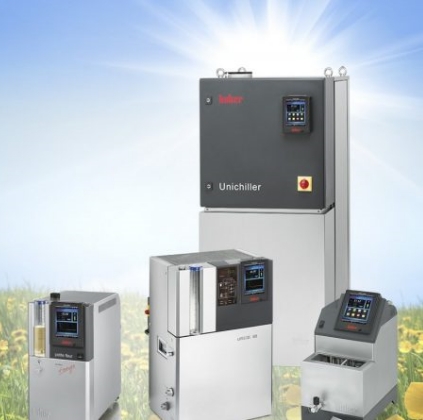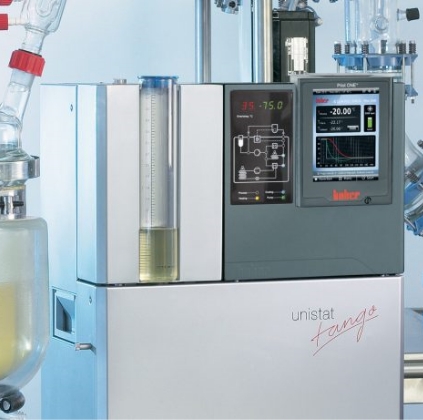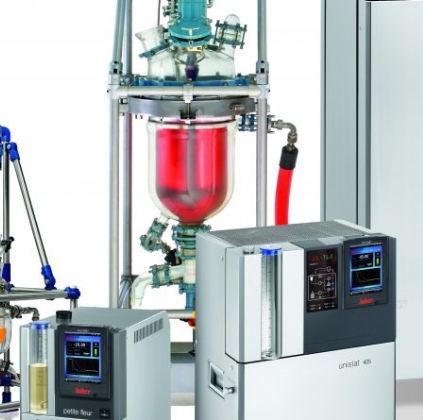The importance of
volume flow in the power transmission of temperature control units
Avoid mistakes when running a standard application
The specifications in a specification can be calculated theoretically during design, but only the practical test reveals the unvarnished truth. If practice does not match theory, those responsible search desperately for explanations and come up with theories that are not always convincing. In this article, I would like to discuss the topic of volume flow in the temperature control of a double jacket.
As mentioned in my previous articles, the heating capacity and the cooling capacity are important variables for the design of temperature control units. In these articles, I also discussed the comparability of temperature control units from different suppliers. Engineering offices that plan and design complete systems still often rely only on the performance data (heating capacity and cooling capacity). Actually, however, engineering offices should be more familiar with the relationship between power transmission and different volume flows. A fallacy is e.g. the assumption that the power transfer is primarily dependent on the "heat transfer" of the double jacket vessel and that the volume flow would only play a subordinate role.
It is true that the "heat transfer" plays an important role, but if the double jacket vessel is given, the volume flow also plays a very important role! Since volume flow has a significant impact on power transfer, it should not be underestimated or ignored.
In the case of customer complaints, it is not uncommon to try to pass the buck to the end customers in the laboratories. Let the end customers first prove that the fault lies with the responsible engineering office or project manager!
In principle, however, the following applies to temperature control using temperature control units: the higher the volume flow, the more energy can be transported and exchanged.
In the field of temperature control unit design, there are two different approaches. There are temperature control units with high volume flow and rather low pressure buildup, then there are temperature control units with low volume flow and high pressure buildup. Even if a low pressure can be set for the latter, you are giving away performance here. This is because less pressure means even less volume flow with these temperature control units.
But how can the statement "high volume flow means better power transmission" be proven? Figure 2 shows characteristic curves of pump curves. The ideal pump curve is one with the highest possible volume flow at low pump pressure. This is because double-walled glass vessels can be destroyed if the pump pressure is too high.
This leads to the assumption that in glass reactors, for example, a standard Unistat® pump (green curve in the above figure) is advantageous because it delivers a high volume flow at relatively low pump pressure and thus transports the energy significantly faster than pumps with high pump pressure and low volume flow. In order to be able to prove this claim reliably and unambiguously, the temperature control units to be compared would have to be connected to the customer application and then tested under the same specifications and conditions.
In our analysis, therefore, the heating and cooling capacities should be comparable, but the volume flow different. However, testing this would be time-consuming and therefore expensive. Hardly any end customer will be able to take the time for this, even if it makes sense! How can the above statement still be proven? Well, it is not that difficult if, for example, a temperature control unit with variable pump speed is available. This makes it possible to keep the heating and cooling capacity constant and the volume flow can be variably adjusted via the pump speed.
The experimental setup (see figure) is kept relatively simple. A glass reactor is operated by means of a temperature control unit (Petite Fleur® model). The jacket temperature (flow temperature, green curve) is observed and evaluated in Figure 4. The temperature set point (white curve) is set between the two values +20°C and +5°C accordingly. The volume flow is represented via pump speed (purple curve). In the first third of the measurement, the pump speed is 3000 rpm. In the second third at 2250 rpm and in the third third at 1500 rpm.
Both the rise time and the fall time are best in the first third. The lower and upper temperature setpoints are reached very quickly in the event of a setpoint jump. In the first third, for example, the temperature setpoint is reached in about 3-4 minutes for a temperature jump from +5°C to 20°C. In the third third, on the other hand, it takes 7-8 minutes. The claim that a high volume flow delivers a better temperature control result is thus proven.
In addition, a high volume flow also provides a better control result. This can also be shown impressively in the figure below:
- In the first third, the set temperatures are already reached after a few minutes.
- In the second third, the results are already worse.
- In the third third, the results are quite poor, because here the set temperatures are only controlled after a significantly longer time.
This not only affects the shell temperature, but of course also the process temperature. Because less power transfer at the shell temperature also means less power transfer at the process temperature.
In addition to the heating and cooling capacities, the volume flow must be given equal consideration in the design and construction of an application. It should be noted that temperature control hoses that are too long or have cross-sections that are too small also restrict the volume flow and therefore have a detrimental effect on the test setup.
